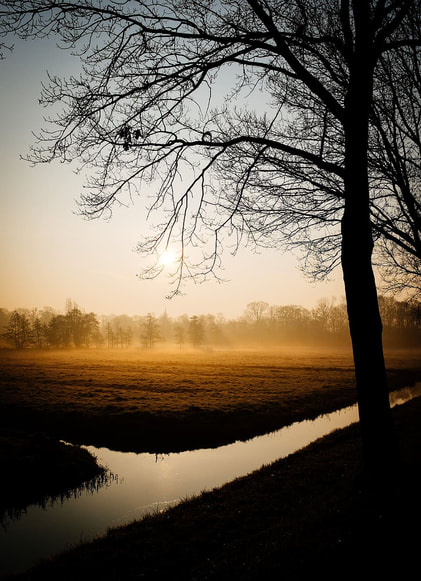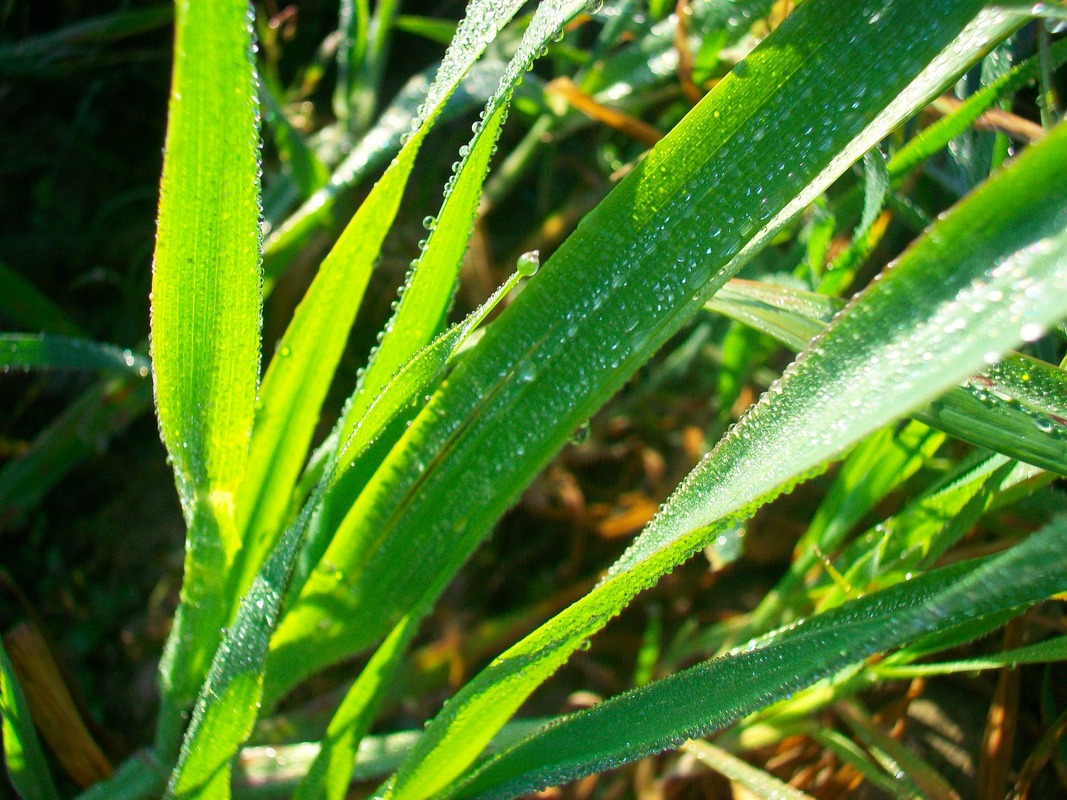|
Water is present as a liquid and as a gas in the atmosphere. When water is a gas, it is called water vapor. You can’t see water vapor in the air, because water molecules are very small. When water is a liquid, you can see it in the form of clouds. It can also fall from the sky as precipitation. Relative Humidity We describe how much water vapor is in the air by using the term relative humidity. Relative humidity tells us how much water vapor is in the air compared to how much it could hold at that temperature. It is shown as a percent. For example, a relative humidity of 50% means the air is holding one half of the water vapor it can hold. Again, this is all dependent on the temperature. Dew Point
Dew forms best when the atmosphere is clean, the air is calm, and there is not much wind. It is not just at night and outdoors, when it forms though. When eyeglasses get steamy in warm, wet rooms, dew can form, though people use the word condensation more often than dew. Darius, Anton. “Portrait of Adolescence.” Wikimedia Commons, Unsplash, 31 Oct. 2016, commons.wikimedia.org/wik/File:Portrait_of_Adolescence_(Unsplash).jpg. “Dew Facts for Kids.” Kiddle, Kiddle Encyclopedia, 18 Apr. 2020, kids.kiddle.co/Dew. “Moisture in the Air – Humidity.” Tree House Weather Kids, University of Illinois Extension, web.extension.illinois.edu/treehouse/clouds.cfm?Slide=1. “Why Is the Grass Wet In the Morning?” Wonderopolis, National Center for Families Learning, www.wonderopolis.org/wonder/why-is-the-grass-wet-in-the-morning. Comments are closed.
|
Author
I often struggle to find websites with thorough explanations in simple language to help kids understand historical events or scientific concepts, so I decided to create some of my own! -Cookie Davis
Archives
March 2024
|



 RSS Feed
RSS Feed